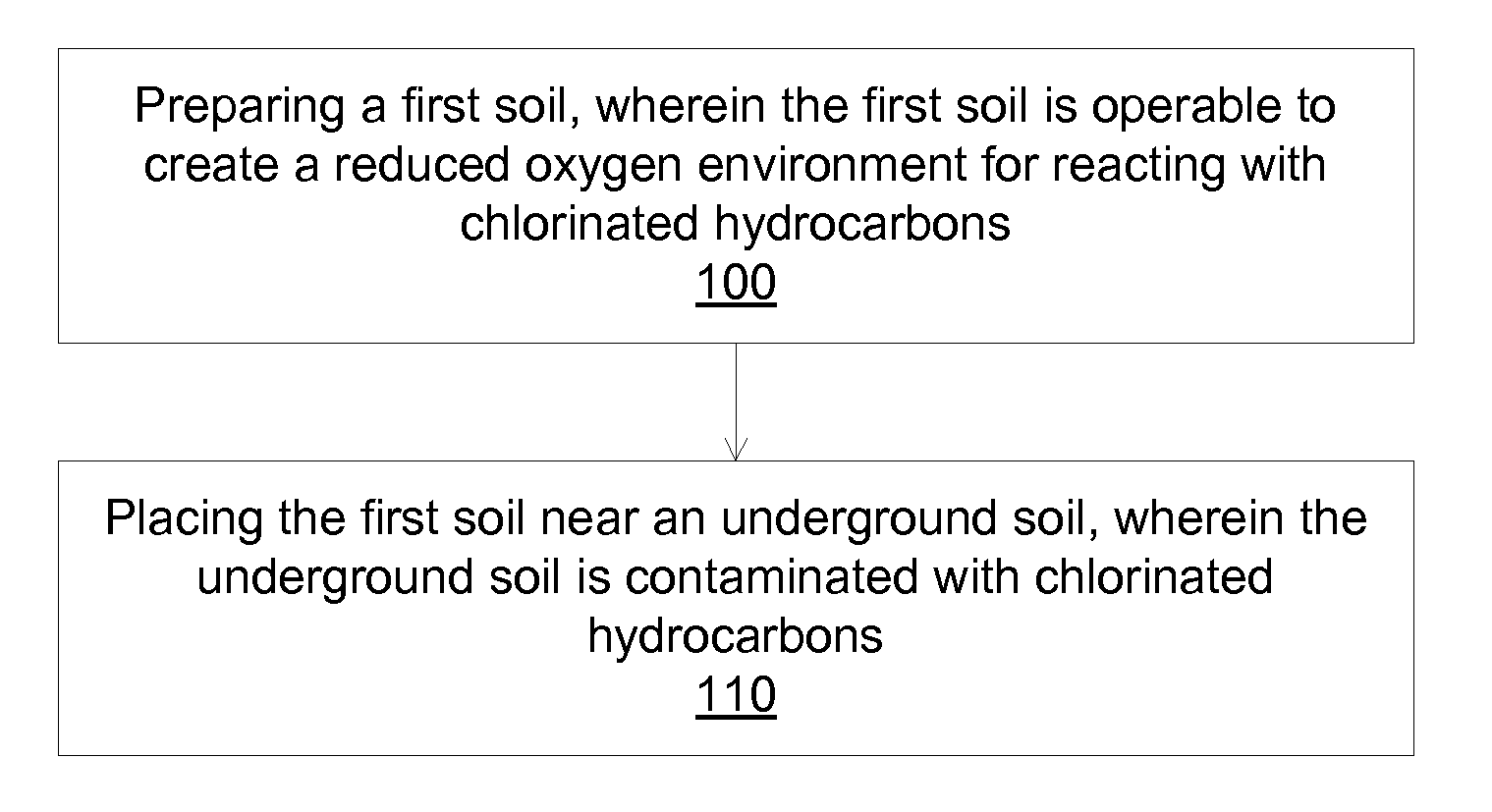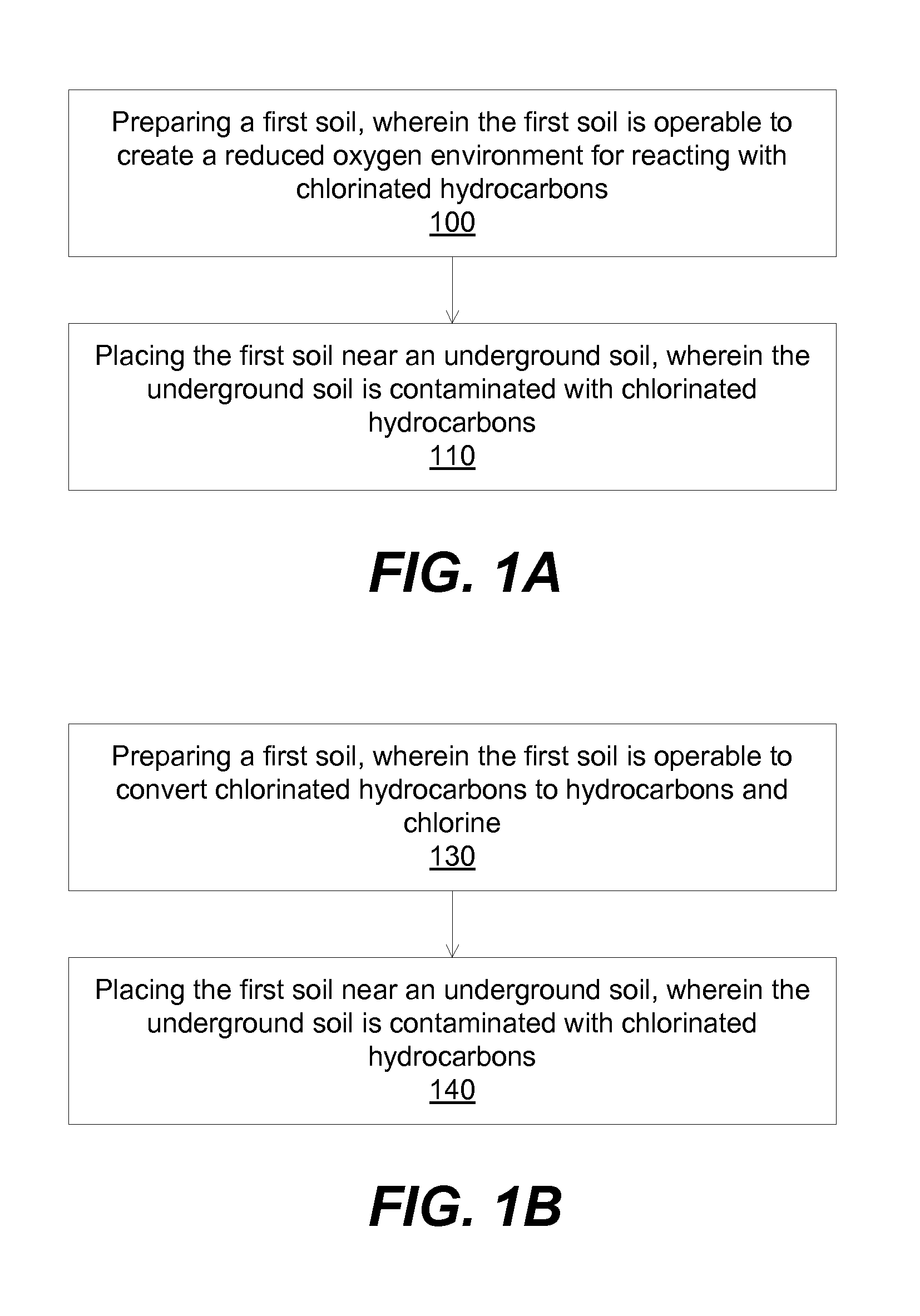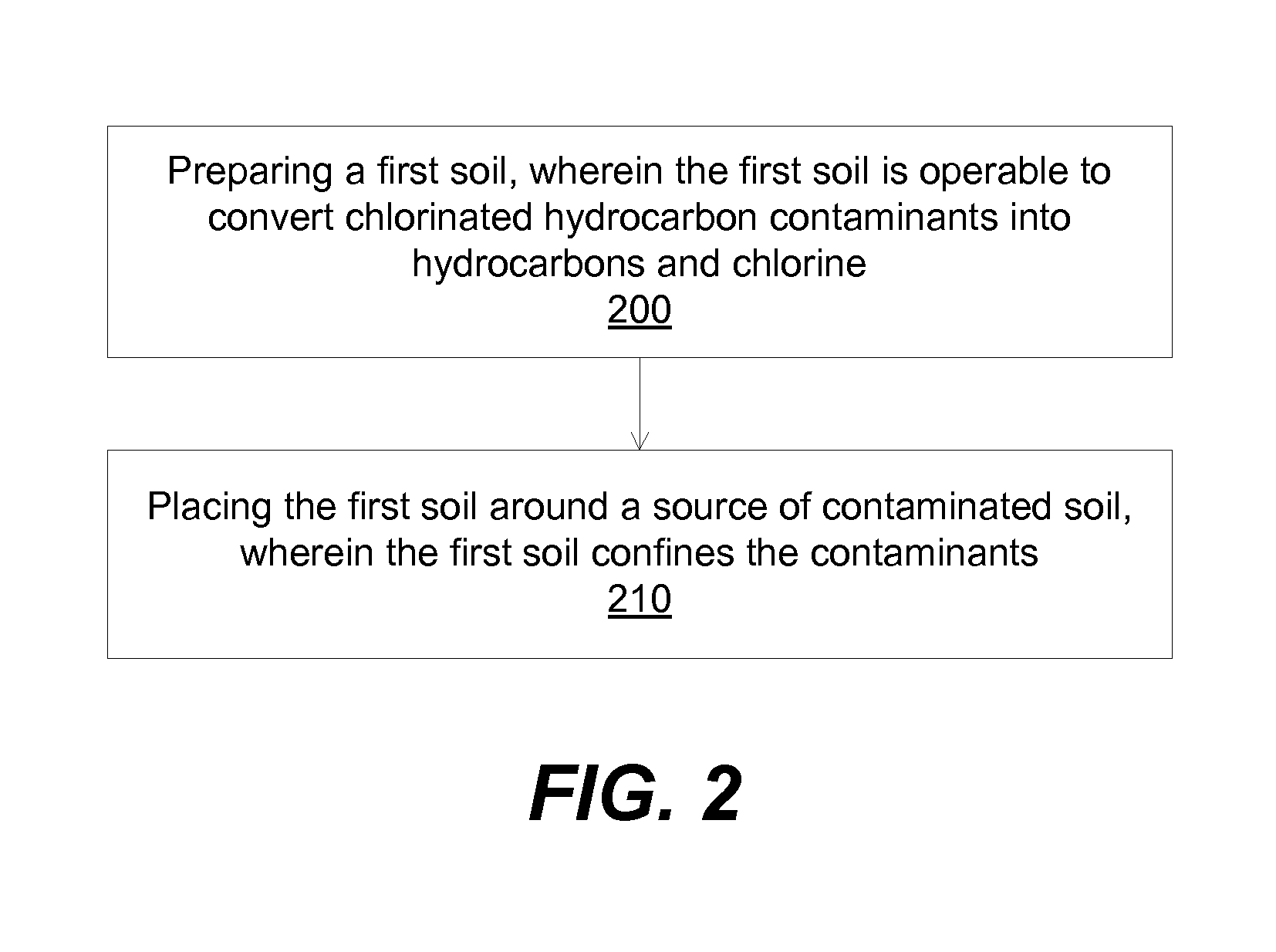Contamination treatment for soil
- Summary
- Abstract
- Description
- Claims
- Application Information
AI Technical Summary
Benefits of technology
Problems solved by technology
Method used
Image
Examples
Embodiment Construction
[0016]In some embodiments, methods to treat contaminated ground soil are provided. For example, the methods can treat ground soil contaminated with chlorinated hydrocarbons.
[0017]Chlorinated hydrocarbons such as perchloroethene (PCE) can biodegrade in a reducing ambient, e.g., low oxygen ambient, below the water table. The process is known as reductive dechlorination, which generally occurs when the oxygen concentration dissolved in the ground soil is less than 2 mg / l.
[0018]In the reductive dechlorination process, a chloride atom in the PCE molecule (Cl2C═CCl2) can be replaced with a hydrogen atom, transforming PCE to trichloroethene (TCE, Cl2C═CHCl). Replacement of a second chloride transforms TCE to cis- or trans-1,2-dichloroethylene (DCE, ClHC═CHCl), then DCE is transformed to vinyl chloride (ClHC═CH2), and finally vinyl chloride is converted to the harmless substances ethylene (H2C═CH2) and chloride (Cl2). Anaerobic degradation rarely precedes to completion in groundwater withou...
PUM
 Login to View More
Login to View More Abstract
Description
Claims
Application Information
 Login to View More
Login to View More - R&D
- Intellectual Property
- Life Sciences
- Materials
- Tech Scout
- Unparalleled Data Quality
- Higher Quality Content
- 60% Fewer Hallucinations
Browse by: Latest US Patents, China's latest patents, Technical Efficacy Thesaurus, Application Domain, Technology Topic, Popular Technical Reports.
© 2025 PatSnap. All rights reserved.Legal|Privacy policy|Modern Slavery Act Transparency Statement|Sitemap|About US| Contact US: help@patsnap.com



